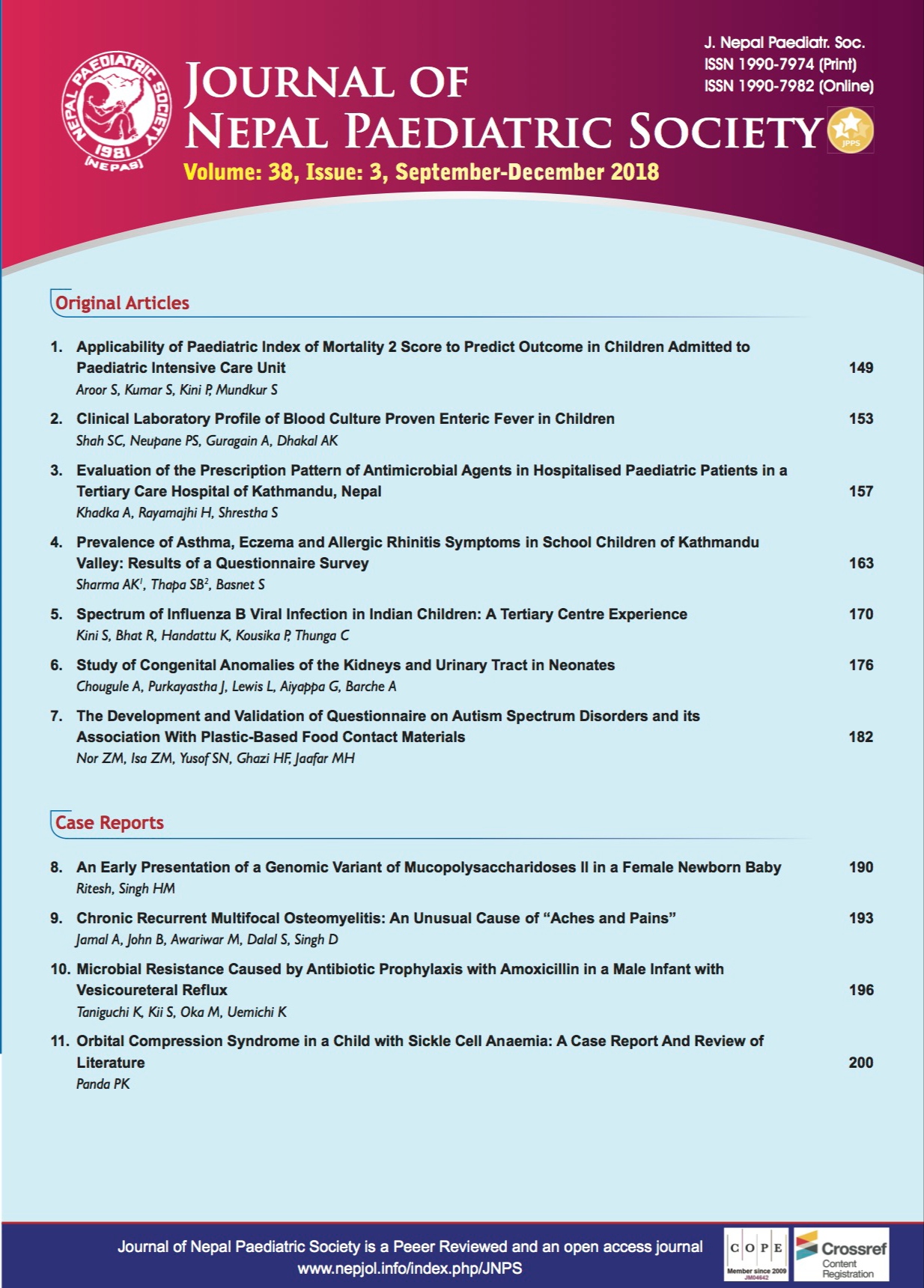Applicability of Paediatric Index of Mortality 2 Score to Predict Outcome in Children Admitted to Paediatric Intensive Care Unit
DOI:
https://doi.org/10.3126/jnps.v38i3.23146Keywords:
critically ill, mechanical ventilation, PIM2 score, predicted death rateAbstract
Introduction: Research on critically ill children admitted to the intensive care unit has shown the usefulness of Paediatric Index of Mortality 2 (PIM2) score at admission to predict outcome. This study was conducted to estimate PIM2 score in children admitted to Paediatric Intensive Care Unit and its correlation with clinical outcome.
Methods: This prospective observational study was conducted in children of age group one month to 18 years admitted to the paediatric intensive care unit of a tertiary care hospital. Data including demographics, diagnostic categories, duration of hospital stay, predicted death rate (PDR) measured by PIM2 score was compared between survivors and non survivors. Logistic regression analysis was performed to arrive at a risk adjusted relationship between the different predictor variables and the probability of death.
Results: Consecutive 130 children admitted to PICU during the study period were enrolled. The mean PDR (%) of the total study population was 22.4 ± 10.60. The mean PDR in survivors was 12.4 ± 7.80 while the PDR in non survivors was 44.2 ± 12.62 (p value < 0.001). Children with PDR < 1% had a mortality rate of 2.4% when compared to 71.4% in children with PDR > 5% (p value < 0.001). PDR by PIM2 score and the presence of hypo-albuminemia remained significant even after adjusting for age in multivariate logistic regression analysis.
Conclusion: PDR measured by PIM2 score differentiated well between survivors and non survivors in PICU. The predicted death rate was less than the observed death rate. PIM2 score is a useful tool to assess the severity of illness and predict outcome.
Downloads
Downloads
Published
How to Cite
Issue
Section
License
Authors who publish with this journal agree to the following terms:
Authors retain copyright and grant the journal right of first publication with the work simultaneously licensed under a Creative Commons Attribution License that allows others to share the work with an acknowledgement of the work's authorship and initial publication in this journal.
Authors are able to enter into separate, additional contractual arrangements for the non-exclusive distribution of the journal's published version of the work (e.g., post it to an institutional repository or publish it in a book), with an acknowledgement of its initial publication in this journal.
Authors are permitted and encouraged to post their work online (e.g., in institutional repositories or on their website) prior to and during the submission process, as it can lead to productive exchanges, as well as earlier and greater citation of published work (See The Effect of Open Access).



